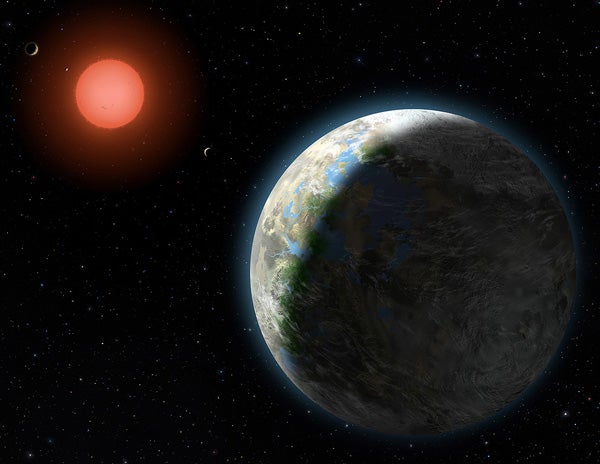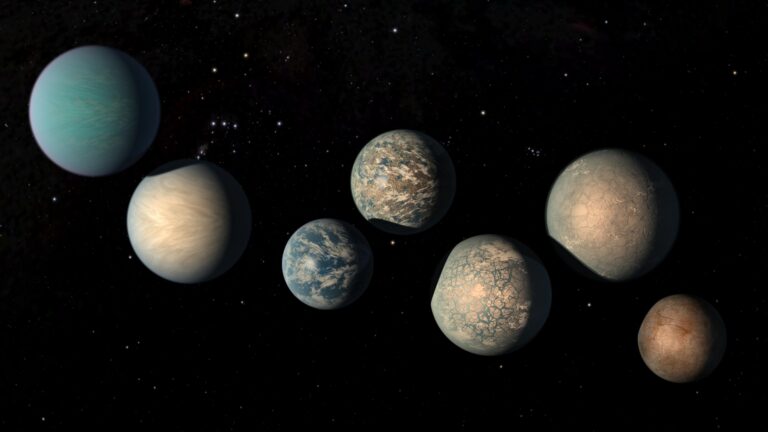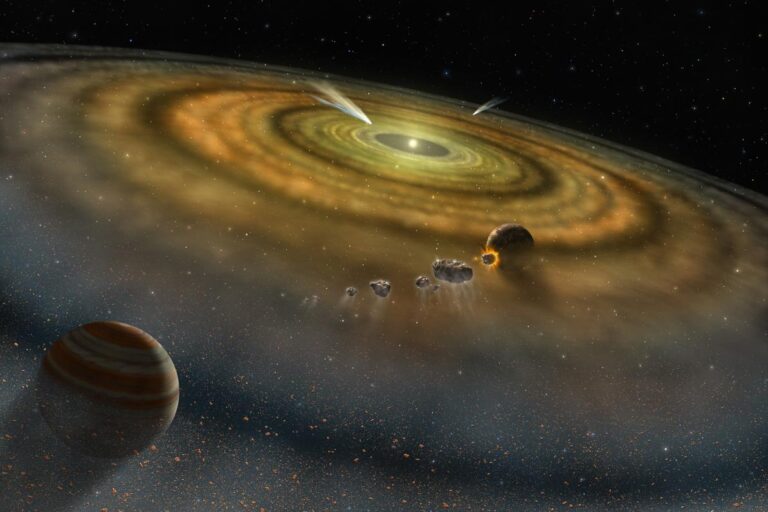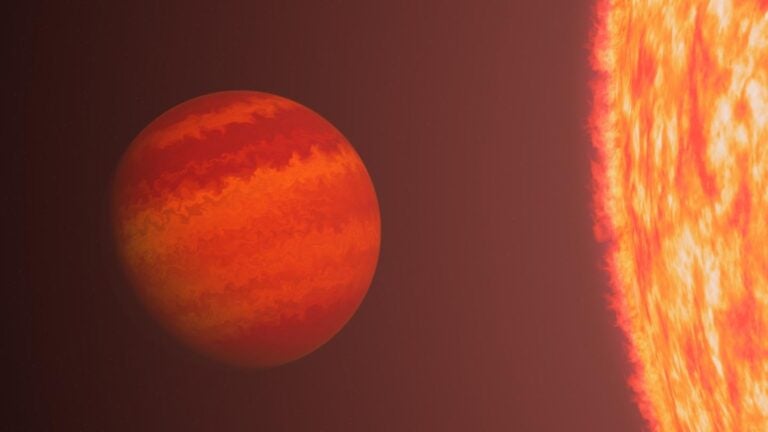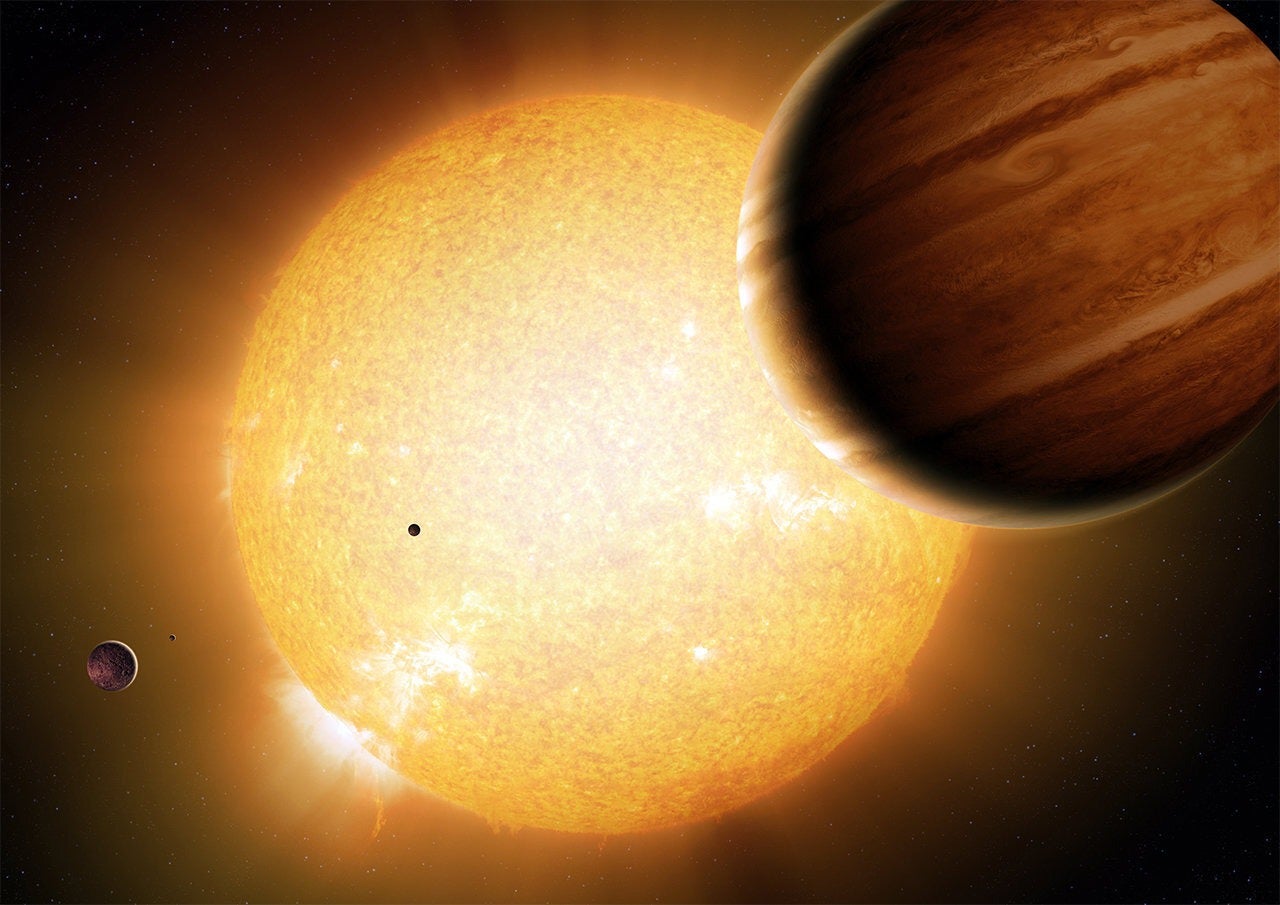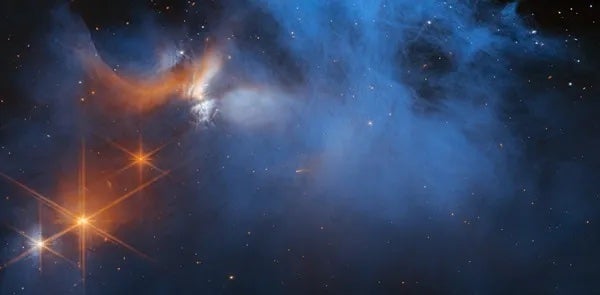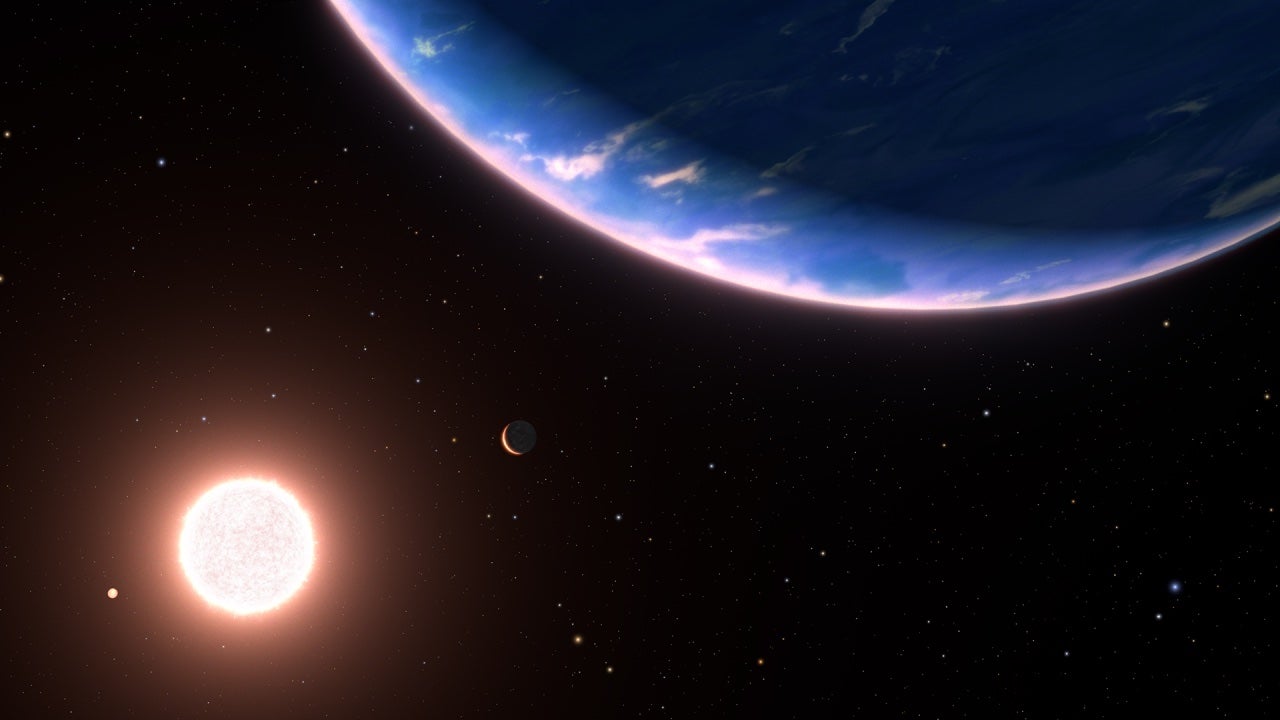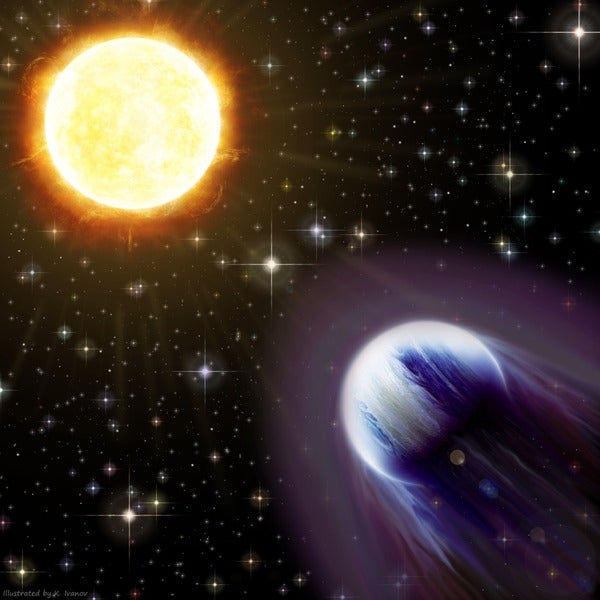The potentially habitable planet Gliese 581g orbits in the foreground of this artist’s conception. According to one research team, the world sits in the middle of its red dwarf star’s habitable zone and thus might possess liquid water on its surface. However, other astronomers have yet to observationally confirm the exoplanet’s existence. Lynette Cook
In the April 2011 issue, Ray Villard wrote about the steps in the search for planets similar to Earth. First, astronomers need to find worlds similar in size that are orbiting within the star’s habitable zone — a region around a sun that liquid water might be able to exist on the planet’s surface. Then, they’ll need to analyze that planet’s atmosphere.
In the April article, Villard touches on methods to study the atmospheric compositions of these worlds. An article we published in the February 2010 issue expands on such methods. We’ve included this article below. So if you’re interested in how astronomers are analyzing extrasolar planets’ atmospheres — and even how they’re studying the weather patterns on such worlds — check out Robert Zimmerman’s “How astronomers probe weather on exoplanets.”

